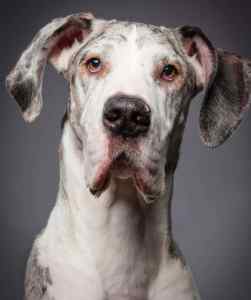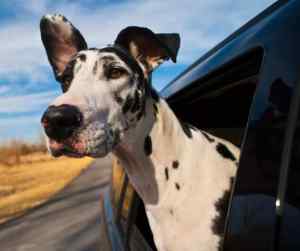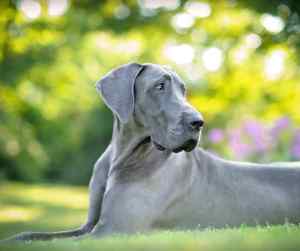Discover the Great Dane, a Loving Companion and Regal Addition to Your Family
When it comes to choosing a new addition to your family, there are few breeds as majestic and loving as the Great Dane. Known for their impressive stature and gentle nature, these towering canines have captured the hearts of dog lovers around the world.
- Great Danes
- Discover the Great Dane, a Loving Companion and Regal Addition to Your Family
- Great Dane History
- Size Matters Understanding the Impressive Stature of Great Danes
- Gentle Giants Exploring the Gentle and Loving Nature of Great Danes
- Great Dane Temperament Unraveling the Personality Traits of this Majestic Breed
- Training Great Danes Tips and Techniques for Nurturing Obedience and Good Behavior
- Great Dane Health Common Concerns and How to Keep Your Pet in Optimal Condition
- Exercise and Nutrition Meeting the Unique Needs of Great Danes
- Great Dane Grooming Maintaining the Elegance and Cleanliness of Your Regal Companion
- Great Dane as a Family Pet Why They Make Excellent Companions for All Ages
- Great Dane and Children Ensuring a Safe and Harmonious Relationship
- Conclusion Embrace the Great Dane’s Love, Loyalty, and Majestic Presence in Your Family
Whether you are looking for a loyal companion or a regal presence in your home, the Great Dane is sure to exceed your expectations.
In this article, we will delve into the history, size, temperament, training, health, exercise and Great Dane nutrition, grooming, and suitability of Great Danes as family pets, providing you with a comprehensive understanding of this remarkable breed of dog.
Great Dane History
 The Great Dane, known for its grand stature and gentle temperament, finds its roots in ancient history, with a lineage that can be traced back thousands of years. Images of dogs resembling the Great Dane have been found on Egyptian artifacts dating back to 3000 B.C. and in Babylonian temples built around 2000 B.C.
The Great Dane, known for its grand stature and gentle temperament, finds its roots in ancient history, with a lineage that can be traced back thousands of years. Images of dogs resembling the Great Dane have been found on Egyptian artifacts dating back to 3000 B.C. and in Babylonian temples built around 2000 B.C.
The breed’s ancestors were likely a mix of the English Mastiff and the Irish Wolfhound, which were bred by German nobility to hunt wild boar and protect their estates. The breed was not known as the Great Dane until much later; in Germany, it was called the Deutsche Dogge, which means “German Mastiff.”
The development of the Great Dane as known today was a gradual process of refining and standardizing the breed’s characteristics. In the 16th century, these large boarhounds found their way into the homes of German nobility, not just as hunters but also as revered protectors and companions.
It was during the 1800s that the breed was further refined and its temperament softened to suit its evolving role as a companion dog. In 1880, Germany declared the Great Dane its national dog and sought to distance the breed from its mastiff roots by standardizing its unique characteristics. This move solidified the breed’s identity separate from other mastiff-like dogs.
Internationally, the Great Dane gained popularity and became recognized for its regal appearance and gentle nature. The American Kennel Club registered its first Great Dane in 1887, and since then, the breed has become a beloved and recognizable giant in the canine world.
Despite their imposing size, Great Danes are often referred to as “gentle giants” due to their friendly and affectionate demeanor.
Today, Great Danes are cherished family members known for their loyalty and companionship. Although they are no longer needed to hunt wild boar, they continue to offer the same noble protection to their human families as they did hundreds of years ago.
Size Matters: Understanding the Impressive Stature of Great Danes
 One of the most striking features of Great Danes is their size. Standing at an average height of 30 inches and weighing between 100 to 200 pounds, these dogs are truly giants among canines. Their size alone can be intimidating to some, but their gentle nature quickly dispels any fears.
One of the most striking features of Great Danes is their size. Standing at an average height of 30 inches and weighing between 100 to 200 pounds, these dogs are truly giants among canines. Their size alone can be intimidating to some, but their gentle nature quickly dispels any fears.
Great Danes are known for their elegance and grace, with a long, lean body and a proud posture. Their size makes them a regal addition to any family, commanding attention and admiration wherever they go.
Gentle Giants: Exploring the Gentle and Loving Nature of Great Danes
 Despite their imposing size, Great Danes are renowned for their gentle and loving nature. They are known to be patient and tolerant, making them excellent companions for families with children or other pets.
Despite their imposing size, Great Danes are renowned for their gentle and loving nature. They are known to be patient and tolerant, making them excellent companions for families with children or other pets.
Great Danes are often described as “gentle giants” due to their calm and affectionate demeanor. They thrive on human companionship and are known to form strong bonds with their owners. Their loving nature makes them excellent therapy dogs, providing comfort and support to those in need.
Great Dane Temperament: Unraveling the Personality Traits of this Majestic Breed
The temperament of a Great Dane is a key factor to consider when deciding if this breed is right for your family. Great Danes are generally friendly, sociable, and eager to please. They are known for their loyalty and devotion to their owners, often forming strong bonds that last a lifetime.
However, it is important to note that individual temperaments can vary, and early socialization and training are crucial in shaping a Great Dane’s personality. With proper training and socialization, Great Danes can be well-behaved and obedient companions.
Training Great Danes: Tips and Techniques for Nurturing Obedience and Good Behavior
 Training a Great Dane requires patience, consistency, and positive reinforcement. Due to their size and strength, it is important to start training from a young age to establish good behavior and prevent any potential issues.
Training a Great Dane requires patience, consistency, and positive reinforcement. Due to their size and strength, it is important to start training from a young age to establish good behavior and prevent any potential issues.
Great Danes are intelligent dogs and are eager to please their owners, making them relatively easy to train. Positive reinforcement techniques, such as rewards and praise, work best with this breed. Consistency and firmness are also important, as Great Danes can be stubborn at times. With proper training, Great Danes can become well-mannered and obedient companions.
Great Dane Health: Common Concerns and How to Keep Your Pet in Optimal Condition
 Like all dog breeds, Great Danes are prone to certain health issues. One of the most common concerns for Great Danes is bloat, a life-threatening condition that affects the stomach.
Like all dog breeds, Great Danes are prone to certain health issues. One of the most common concerns for Great Danes is bloat, a life-threatening condition that affects the stomach.
Other health issues that can affect Great Danes include hip dysplasia, heart disease, and certain types of cancer. Regular veterinary check-ups, proper Great Dane nutrition, and appropriate exercise are essential in keeping your Great Dane in optimal condition.
It is also important to be aware of the signs and symptoms of potential health problems and seek veterinary care promptly.
Exercise and Nutrition: Meeting the Unique Needs of Great Danes
Despite their size, Great Danes have relatively low exercise requirements compared to other breeds. They are not overly active dogs and are generally content with a moderate amount of exercise. However, it is important to provide them with regular exercise to maintain their muscle tone and prevent dog obesity. Proper Great Dane nutrition, consisting of a balanced diet is also crucial for the overall health and well-being of these very large dogs.
Feeding them high-quality dog food that is appropriate for their age and size is essential in meeting their nutritional needs.
Great Dane Grooming: Maintaining the Elegance and Cleanliness of Your Regal Companion
Despite their short coat, Great Danes do require regular grooming to keep them looking their best. Their coat is easy to maintain and only requires occasional brushing to remove loose hair and keep it clean. Regular nail trims, ear cleaning, and dental care are also important aspects of Great Dane grooming.
Additionally, regular baths can help keep their coat clean and free from odors. Grooming sessions also provide an opportunity to bond with your Great Dane and ensure their overall well-being.
Great Dane as a Family Pet: Why They Make Excellent Companions for All Ages
 Great Danes are known for their gentle and loving nature, making them excellent companions for families of all ages. They are patient and tolerant, making them great playmates for children.
Great Danes are known for their gentle and loving nature, making them excellent companions for families of all ages. They are patient and tolerant, making them great playmates for children.
Their size can be intimidating to some, but their gentle demeanor and natural instinct to protect their loved ones make them excellent family dogs. Great Danes are also known to get along well with other pets, making them a great addition to multi-pet households. Their loyalty and devotion to their owners make them a cherished member of the family.
Great Dane and Children: Ensuring a Safe and Harmonious Relationship
When introducing a Great Dane into a household with children, it is important to ensure a safe and harmonious relationship. Supervision is key, especially when young children are involved, as Great Danes can accidentally knock them over due to their size.
Teaching children how to properly interact with dogs and setting boundaries is crucial in preventing any potential accidents. Early socialization and training are also important in shaping a Great Dane’s behavior around children. With proper guidance and supervision, Great Danes can form strong bonds with children and become lifelong companions.
Conclusion: Embrace the Great Dane’s Love, Loyalty, and Majestic Presence in Your Family
 In conclusion, Great Danes are truly remarkable dogs that bring love, loyalty, and a majestic presence to any family. Their gentle nature, impressive size, and regal demeanor make them a unique and cherished addition to any household.
In conclusion, Great Danes are truly remarkable dogs that bring love, loyalty, and a majestic presence to any family. Their gentle nature, impressive size, and regal demeanor make them a unique and cherished addition to any household.
With proper care, training, and socialization, Great Danes can thrive as loving companions and bring joy to the lives of their owners.
If you are looking for a loyal and regal companion, look no further than the this amazing giant dog breed. Embrace their love, loyalty, and majestic presence, and you will be rewarded with a lifelong bond that is truly special – the love and devotion of a Great Dane.

